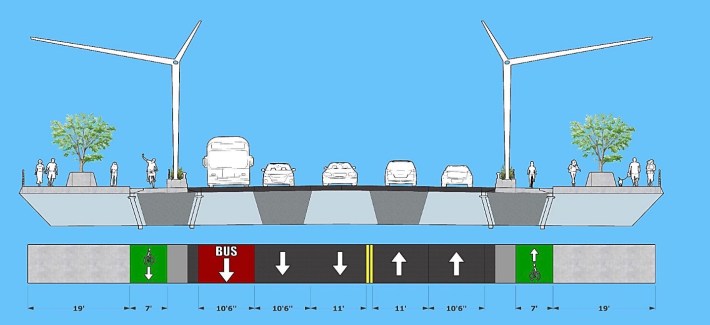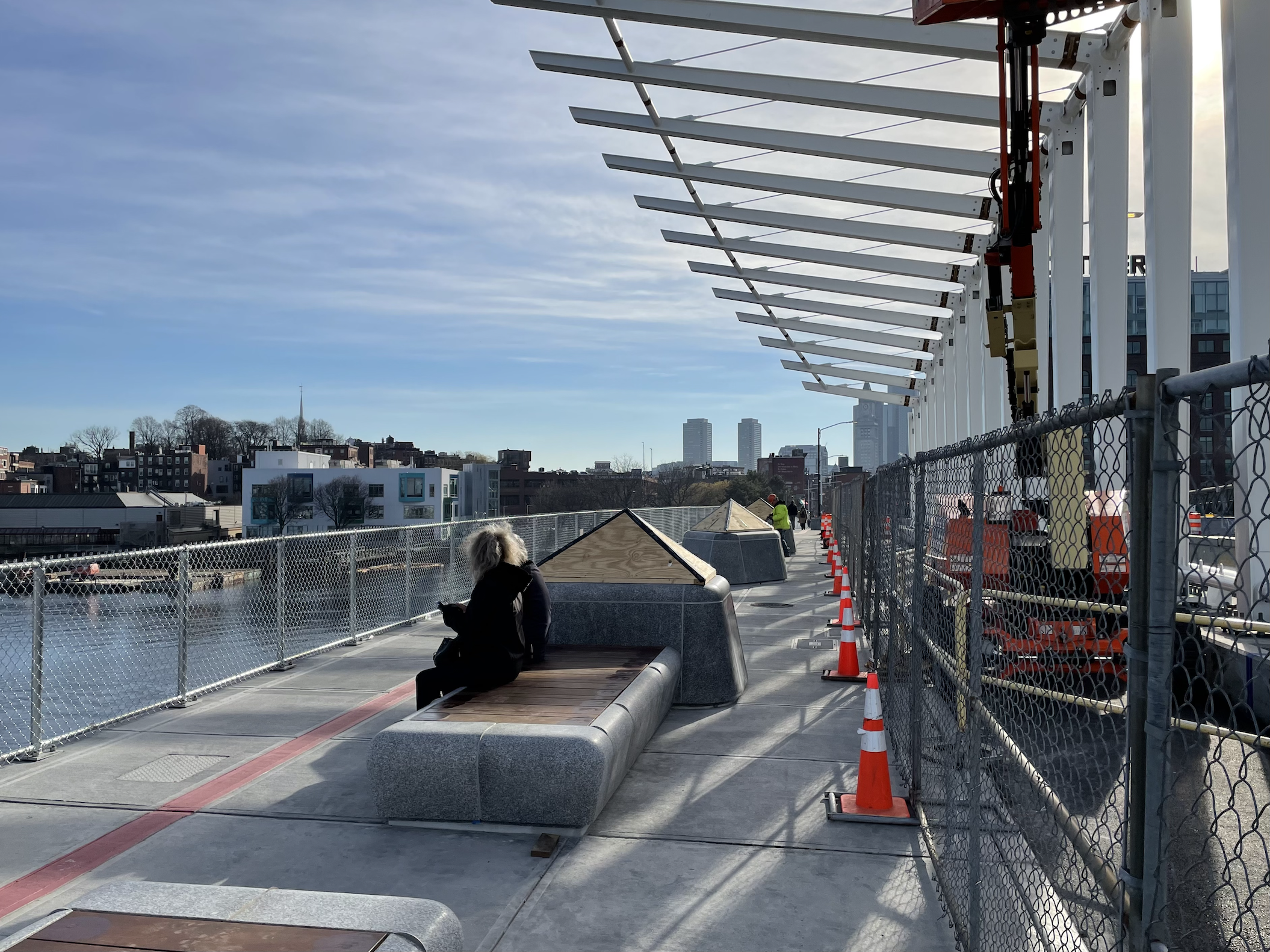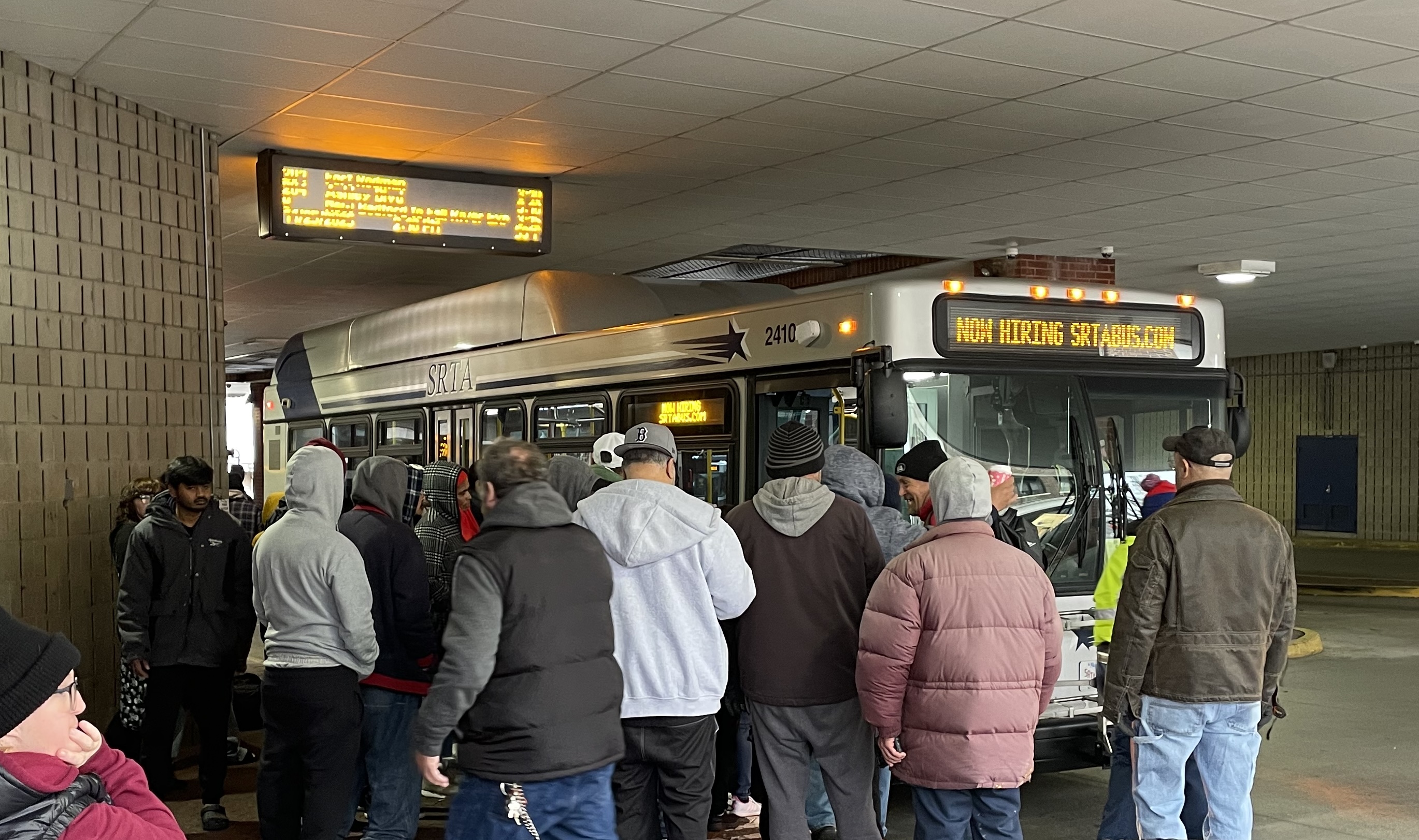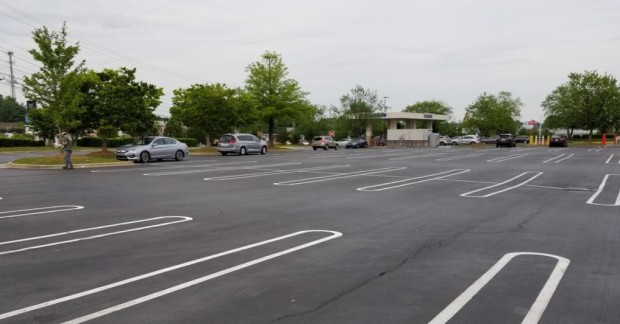The new North Washington Street Bridge between the North End and Charlestown, which has been under construction for over six years, is finally nearing completion, and will be "fully open" by next April, according to MassDOT's Chief Engineer.
The eastern side of the new bridge partially opened to the general public a year ago, but work has been continuing on the western (upstream) portion of the new bridge.
MassDOT Chief Engineer Carrie Lavallee reported at Wednesday's MassDOT board meeting that "our current estimate is to have the deck complete by the end of this season, and to make sure that the traffic can be switched over to the new bridge by the end of the year. We hope to have the bridge fully open by the end of spring."
Bridge completion will create inbound bus lane for the 111
For the past five years, motorized traffic through the bridge construction zone has been confined to just three lanes.
Under current plans, when the new bridge fully opens, it will include a single inbound bus lane for one of the MBTA's busiest bus routes – the 111 – in addition to the less-frequent 92 and 93 routes through Charlestown.

In September 2019, just before the old North Washington Street Bridge closed for good, the City of Boston painted a southbound bus lane on North Washington Street between the bridge and Haymarket station. In the summer of 2021, the city added a second bus lane in the northbound direction on the same street.
Those changes fueled speculation that when the new bridge finally opened, the city might retain the three-lane bridge layout for general traffic in order to add a second northbound bus lane for the roughly 17,000 bus riders who cross the bridge on a typical weekday.
But last week, City of Boston Transportation Department officials confirmed to StreetsblogMASS that the city does not plan to add a second northbound bus lane on the new bridge when the wider bridge deck opens to traffic later this winter.
Instead, the new bridge's opening will add a fourth lane for private vehicle traffic, which will expand lane capacity and inevitably subsidize more motor vehicle traffic in downtown Boston.






